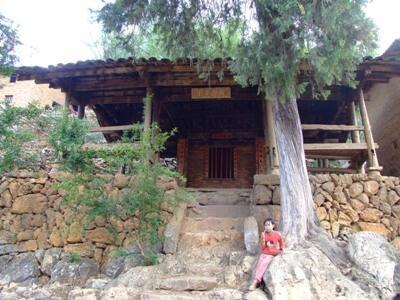This book uses the Zhuang orthography approved by the national government of China. Zhuang spelling are according to the two volume primer entitled Sw Doakgoanq Nenhjih Daih’aet Doag approved by the Yunnan Province Middle and Elementary School Curriculum Approval Committee (published by the Yunnan Nationalities Press in 2006.) The Zhuang transcription and the International Phonetic Alphabet phonemic transcriptions provided in this book are based upon the Nong dialect or “Yan-Guang Vernacular” of the Southern Zhuang language. The phonemes we are here representing with /c/ and /cʰ/ are often pronounced as [tɕ] and tɕʰ], respectively. Although the pronunciations [tʂ] and [tʂʰ] may occur, in the Nong dialect of Southern Zhuang, there is not a phonemic contrast between retroflex and palatal (or alveo-palatal) consonants. So we here use the IPA /c/ and /cʰ/ to represent the palatal stop (or alveo-palatal affricate), as William Gedney did in his transcriptions of ̈”Western Nung,” Gedney’s term for the Yan-Guang Southern Zhuang (Nong Zhuang) of Maguan County, Yunnan Province. The phonemes here represented by /θ/ and /ð/ are often pronounced as [s] and [ʑ], respectively, by certain speakers or in certain contexts. Likewise the palatal nasal phoneme here represented with /ɲ/ may be pronounced as [ȵ], the oral fricative /h/ may be pronounced as [x], and the mid central or back unrounded vowel phoneme /ɤ/ maybe prounced as [ə]. The phonemic contrast between /o/ and /ɔ/ often, though not always, reflects an historic phonenic vowel length contrast (/oː/ and /o/), so it is possible that there remain some Nong dialect areas that still maintain this vowel length contrast and do not have the /ɔ/ phoneme. But because we are analyzing the language synchronically rather than from an exclusively diachronic perspective and spelling according to the spelling scheme of《Sw Doakgoanq Nenhjih Daih’aet Doag》we will use the respresentaion{o} for /o/ and {oa} for /ɔ/, and not use the spelling {oe}. For the most part, the transcription follows the pronunciation of the chanter, Mr. Zhang Tinghui, who originates from Malipo County, so can be said to be reflective of the Southern Nong Zhuang sub-dialect area, which is spoken by the Nong branch of Zhuang people in Malipo, Xichou, Maguan and Wenshan counties of Yunnan Province.

